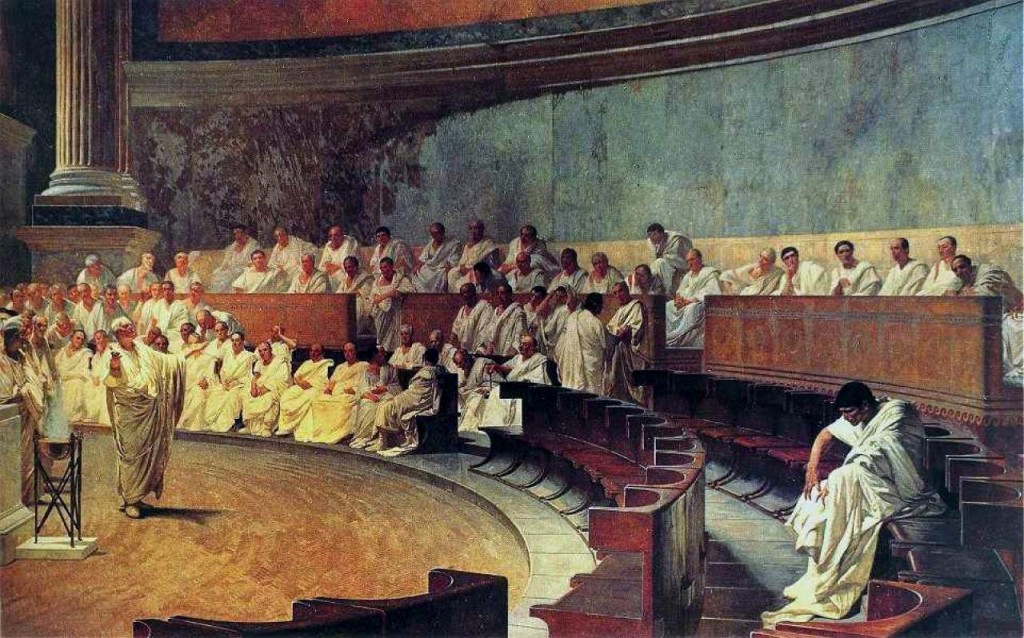Saint Augustine argued that, even though the beauty of truth is a superior form of beauty, it should be not divorced from material beauty, especially when presenting the truths of the Faith.
[featured-image single_newwindow=”false”]
First of all, Augustine pointed out that while beauty of the material realm can be beneficial to raise our souls to God who is the source of all beauty, there is another dimension of beauty that was superior and resided in the intellectual realm.
Influenced by Platonism, Augustine saw that the pursuit of truth appeared to be a higher form of beauty. This reality first presented itself in Augustine’s conversion.
God “shouted” and “glistened” in Augustine’s life first in a revelation of truth. Augustine initially sought God by hungering after truth, which involved an attraction to the truth found in Greek philosophy. In this context, Augustine found “divine beauty[…]in Greek philosophy[,] the ‘captivating’ beauty of that intellectual light which itself makes everything light.”[1]
Augustine would later discover the source of the divine beauty found in philosophy to be God. This “captivating beauty” of the truth became a focus of how Augustine taught others to approach God. Augustine describes this preference for the beauty of truth using
the little myth of the two birds Philocalia (love of beauty) and Philosophia (love of wisdom). Philocalia, unconscious of her origin, sits trapped in the cage of the earthly world, while Philosophia flies free and soars to heaven; she recognizes her imprisoned sister, but can only rarely free her.[2]
As it can be seen in this short story, the pursuit of wisdom is shown by Augustine as a way to God that is easier and allows a soul to fly “free and soar to heaven.” In contrast, the love of the beauty of this world can too often entrap a soul on earth and only rarely can the pursuit of wisdom bring the soul enamored with physical beauty up to the freedom of truth.
Saint John Paul II echoed this importance of the pursuit of wisdom in his encyclical Fides et Ratio, where he specifically charged philosophers to be involved in the New Evangelization. Indeed, this
“call to philosophers might surprise some people, but is not the via pulchritudinis also a via veritatis on which man engages to discover the bonitas of God’s love, source of all beauty, truth and good?”[3]
For Augustine, “[t]his experience of meeting the God of Beauty is an event lived in the totality of being and not only in the senses.”[4]
Beauty and Truth
However, while the beauty of truth has a superior role in raising a soul to God and combatting the many lies of Satan, Saint Augustine added that truth should be made attractive. This came from his own conversion and his struggles with the lack of literary beauty of Sacred Scripture.
During his long quest for the truth, Saint Augusinte became enamored with the philosopher Cicero and his work the Hortensius. What particularly drew him in besides the truth presented in the Hortensius, was the beauty of Cicero’s style of writing. At first Augustine refuses the allurement of Cicero’s literary skill when he says, “I was impressed not by the book’s refining effect on my style and literary expression but by the content.”[5] However, a few paragraphs later Augustine relates how the Sacred Scriptures did not hold his attention on account of their lack of literary beauty. He relates, “[the Sacred Scriptures] seemed to me unworthy in comparison with the dignity of Cicero.”[6] Even though it was the truth conveyed by Scripture that eventually aided Augustine along the path to God, the simple style in which it was presented proved to be a stumbling block at first.
Truth that is Attractive
Augustine further develops the importance of an attractive presentation of truth later in his work On Christian Teaching. There he continually stresses that the delivery of an instruction is almost as important as the content.
He starts out making the case for the art of rhetoric when he asks the question, “oratorical ability, is available to both sides; why then is it not acquired by good and zealous Christians to fight for the truth”?[7] Augustine goes on to discuss how exactly someone is to acquire eloquence in speech so as to present the truths of the faith effectively. He even suggests learning rhetoric from pagan schools or by reading secular literature in order to acquire this great skill.[8]
This use of rhetoric is shown by Augustine to be very important, especially “if listeners have to be moved rather than instructed.”[9] In this case, Augustine suggests learning how to give “entreaties, rebukes, rousing speeches, solemn admonitions, and all the other things which have the power to excite human emotions.”[10]
However, while the use of oratorical skill is a key to present the faith well, Augustine warns against the use of this skill divorced from truth. He mentions that there is a danger where audiences, “reckon that somebody who is heard to speak eloquently must also be speaking the truth.”[11] Augustine agrees with the teachers of rhetoric when they say, “eloquence without wisdom was…never beneficial.”[12] In the end, Augustine teaches that beauty is to be wed to the truth and that catechists teaching the faith should do well by learning how to present the faith in an attractive manner.
In summary, truth alone does not always suffice and we can not be guaranteed that someone will be convinced of the truth if it is conveyed in an unattractive manner.
In our next article, we will learn some practical tips to presenting the faith in an attractive manner.
Read the Entire Series
[1] Balthasar, 133.
[2] Ibid, 125.
[3] The Via Pulchritudinis, §II.2.
[4] Ibid.
[5] Augustine, 39.
[6] Augustine, 40.
[7] Saint Augustine, On Christian Teaching, trans. R.P.H. Green, (New Work: Oxford
University Press, 1997), 102.
[8] Ibid, 102-103.
[9] Ibid, 104.
[10] Ibid, 104.
[11] Ibid, 104.
[12] Ibid, 104.

